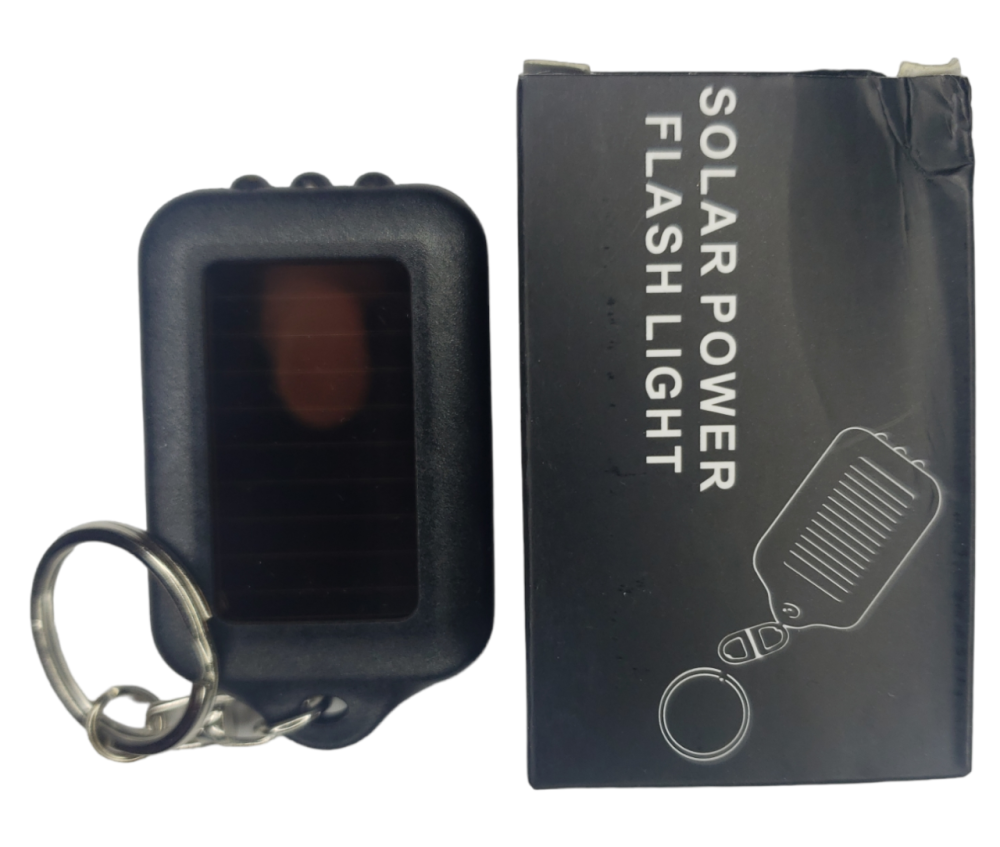We use cookies to make your experience better.
TimmersGems has a new website, existing customers also need to register again.
Flashlight that works on a solar cell with its own battery.
Save a lot on batteries and always have a working flashlight with you to find your way. Easy to charge in the sun in an hour.
Availability:
In stock
SKU
11989
- Buy 10 for €3.50 each and save 12%
A solar cell is an electrical cell that converts light energy into usable electrical energy. There are two types of solar cells. The best known is the all-solid photovoltaic cell, which is mounted in many at the same time in solar panels. The second is the photoelectrochemical cell, which can be found in photoelectrochemical generators. The 'photovoltaic effect' was first observed in 1839 by the French physicist Alexandre-Edmond Becquerel. However, it was not until 1883 that the American scientist Charles Fritts exploited this phenomenon to build the first solar cell. Fritts' solar cell was made of semiconducting selenium coated with an extremely thin, transparent layer of gold. His solar cell could only convert 1 percent of the light into electricity. Instead of generating energy as Fritts himself envisioned, his inefficient solar cell was mainly used in photography as an exposure meter. Subsequently, the Russian physicist Aleksandr Stoletov made the first solar cell based on the principle of the photoelectric effect (discovered earlier in 1887 by Heinrich Hertz) in which light is converted directly into electricity. It was Albert Einstein who was only able to explain this effect in 1905, for which he was awarded the Nobel Prize in Physics in 1921. The modern silicon-based semiconductor solar cell was patented in 1941 by the American Russell Ohl, who then worked at Bell Labs.[3] In May 1939 he accidentally discovered that an electric current was spontaneously generated in a silicon crystal when he illuminated it with a desk lamp. The cause turned out to be a crack in the crystal, later called the p-n junction. His pioneering work in this field would eventually lead to the invention of the transistor. Building on Ohl's work, a more efficient solar cell was developed at Bell Labs in 1954 by Gerald Pearson, Calvin Fuller and Daryl Chapin. By doping silicon with arsenic, they built a solar cell that achieved an efficiency of 4½ to 6 percent. Due to the high production costs, solar cells were – initially – only used for special applications, mainly in space travel. For example, in 1958, the American satellite Vanguard 1 was the first to transmit radio signals from space using a 1-watt solar cell. Only after the oil crisis in the 1980s were solar cells based on gallium arsenide (GaAs) designed with an efficiency of more than 20 percent.
| Dimensions | 50x20x10mm |
|---|---|
| Country of Manufacture | China |












